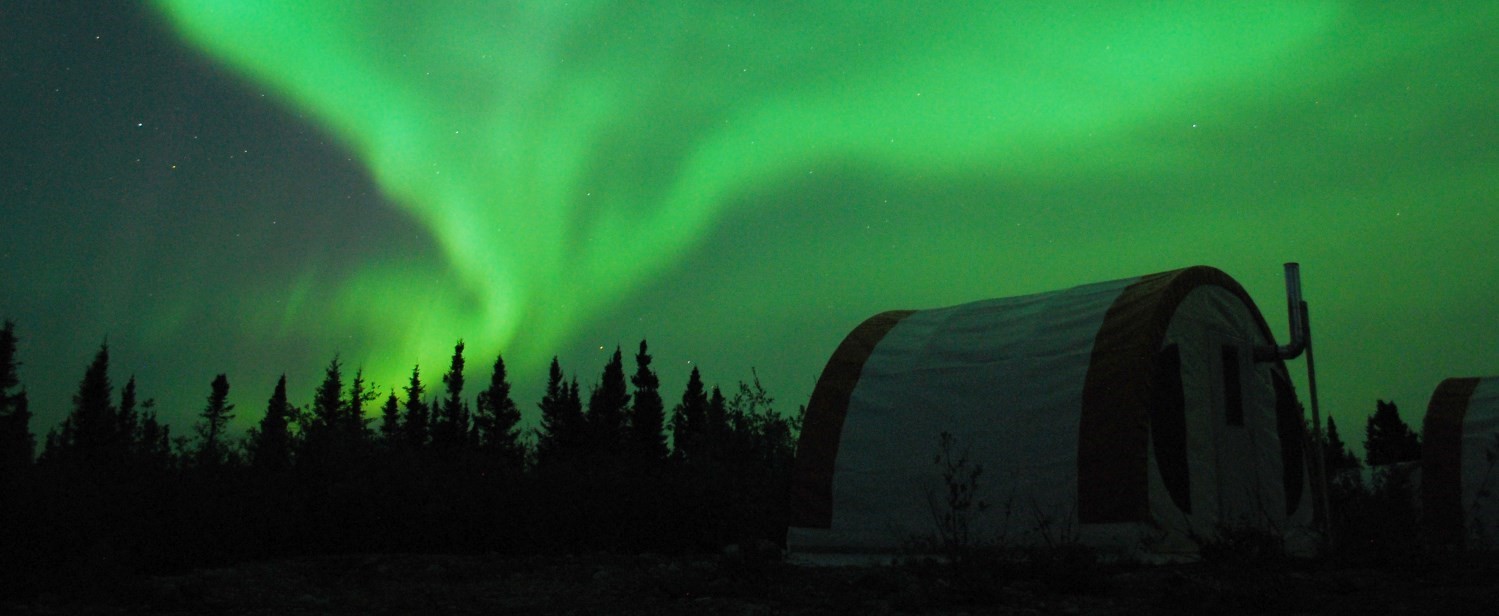
Background
Work along the Rivière aux Feuilles in Quebec (Percival and Card, 1994), and in three areas farther north (Percival et al., 1995, 1996, 1997) allowed Percival et al. (1992, 2001) to recognize a series of distinct geological and geophysical domains within the Minto Subprovince based on lithological, structural and aeromagnetic differences. Between 1997 and 2003, the work carried out by the Government of Québec under the Far North Program clarified the nature and boundaries of these areas. This work highlighted seven domains and two terranes within the Minto Subprovince.
Description
The Lac Minto Domain is part of the Arnaud River Terrane. It is limited to the east by the Qalluviartuuq Domain, to the west by the Tikkerutuk Domain, to the south by the Goudalie Domain and to the north by supracrustal rocks of the Ungava Trough. It is characterized by alternating narrow positive and negative aeromagnetic anomalies.
Geology
The Lac Minto Domain consists of large volcano-sedimentary units predominated by sedimentary rocks (Kogaluc and Mézard complexes; ~2760 Ma) and a large diatexite unit (Le Roy Complex; 2697-2668 Ma) derived from partial melting of sedimentary rocks. These units are the remains of a large sedimentary basin >500 km long (Leclair, 2008). The large proportion of diatexite is the main characteristic of the Lac Minto Domain (Percival et al., 1991). This domain also includes a synvolcanic tonalitic suite (Kakiattuq Suite; <2740 Ma) and an enderbitic suite (Minto Suite; 2735-2710 Ma). Granite intrusions (Morrice Suite; 2684 Ma), which appear as sheets south of the Qalluviartuuq Domain and north of the Goudalie Domain, could represent more evolved phases related to the melting of sedimentary rocks. Except an ancient tonalitic gneiss enclave observed near Minto Lake (3.12 Ga; Percival et al., 1992), rocks of the Lac Minto Domain have inherited zircon ages and mantle extraction model ages ranging from 2.92 to 2.80 Ga, suggesting the absence of a recycled ancient crust (>3.0 Ga) as observed in domains to the south and west (Leclair, 2008).
References
Publications available through Sigéom Examine
LECLAIR, A. 2008. CONTEXTE GÉOLOGIQUE RÉGIONAL DU NORD-EST DE LA PROVINCE DU SUPÉRIEUR. DANS : SYNTHESE DU NORD-EST DE LA PROVINCE DU SUPERIEUR. MRNF. MM 2008-02, 198 pages and 8 plans.
Other publications
Percival, J.A., Card, K.D. 1994. Geology, Lac Minto-Rivière aux Feuilles, Québec. Geological Survey of Canada, « A » Series Map 1854A, 1994, 1 sheet. doi:10.4095/194490
Percival, J.A., Card, K.D., Stern, R.A., Bégin, N.J. 1991. A geologic transect of the Leaf River area, northeastern Superior Province, Ungava Peninsula, Quebec. In: Current Research, Part C, Canadian Shield. Geological Survey of Canada, Paper no. 91-1C, 205 pages. doi:10.4095/132553
Percival, J.A., Mortensen, J.K., Stern, R.A., Card, K.D., Bégin, N.J. 1992. Giant granulite terranes of northeastern Superior Province: the Ashuanipi complex and Minto block. Canadian Journal of Earth Sciences; volume 29, pages 2287-2308. doi:10.1139/e92-179
Percival, J.A., Skulski, T. 2000. Tectonothermal Evolution of the Northern Minto Block, Superior Province, Quebec, Canada. The Canadian Mineralogist; volume 38, pages 345-378. doi:10.2113/gscanmin.38.2.345
Percival, J.A., Skulski, T., Card, K.D., Lin, S. 1995. Geology, Rivière Kogaluc-Lac Qalluviartuuq region (parts of 34J and 34-O), Quebec. Geological Survey of Canada, Open File 3112, 1 sheet. doi:10.4095/205269
Percival, J.A., Skulski, T., Nadeau, L. 1996. Geology, Lac Couture, Quebec. Geological Survey of Canada, Open File 3315, 1 sheet. doi:10.4095/208195
Percival, J.A., Skulski, T., Nadeau, L. 1997. Reconnaissance geology of the Pelican-Nantais Belt, northeastern Superior Province. Geological Survey of Canada, Open File 3525, 1 sheet. doi:10.4095/209271
Percival, J.A., Stern, R.A., Skulski, T. 2001. Crustal growth through successive arc magmatism: reconnaissance U–Pb SHRIMP data from the northeastern Superior Province, Canada. Precambrian Research; volume 109, pages 203-238. doi:10.1016/S0301-9268(01)00148-6

